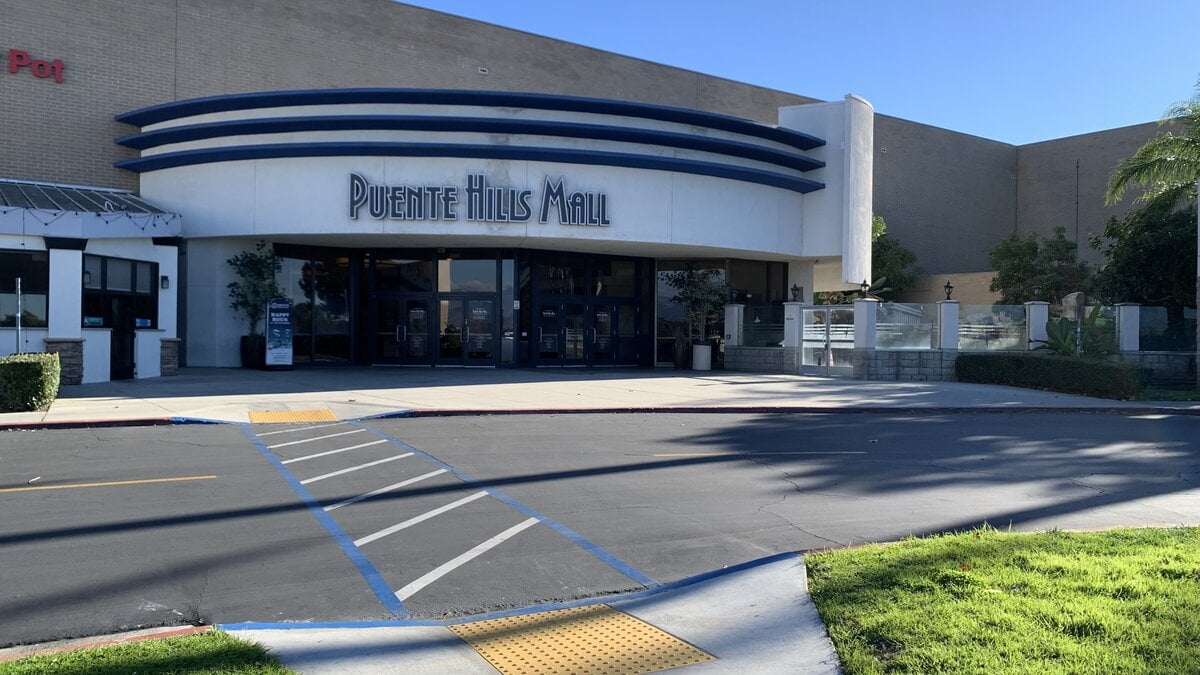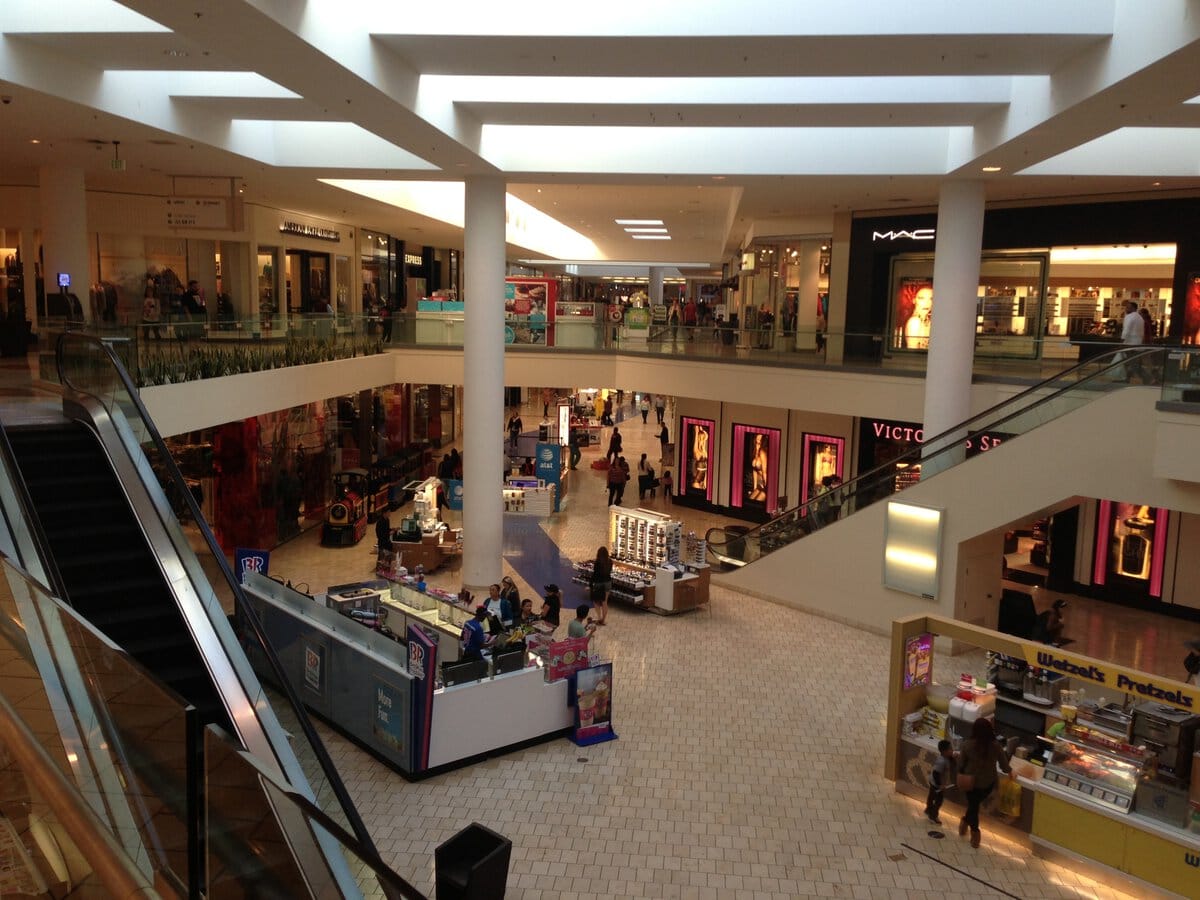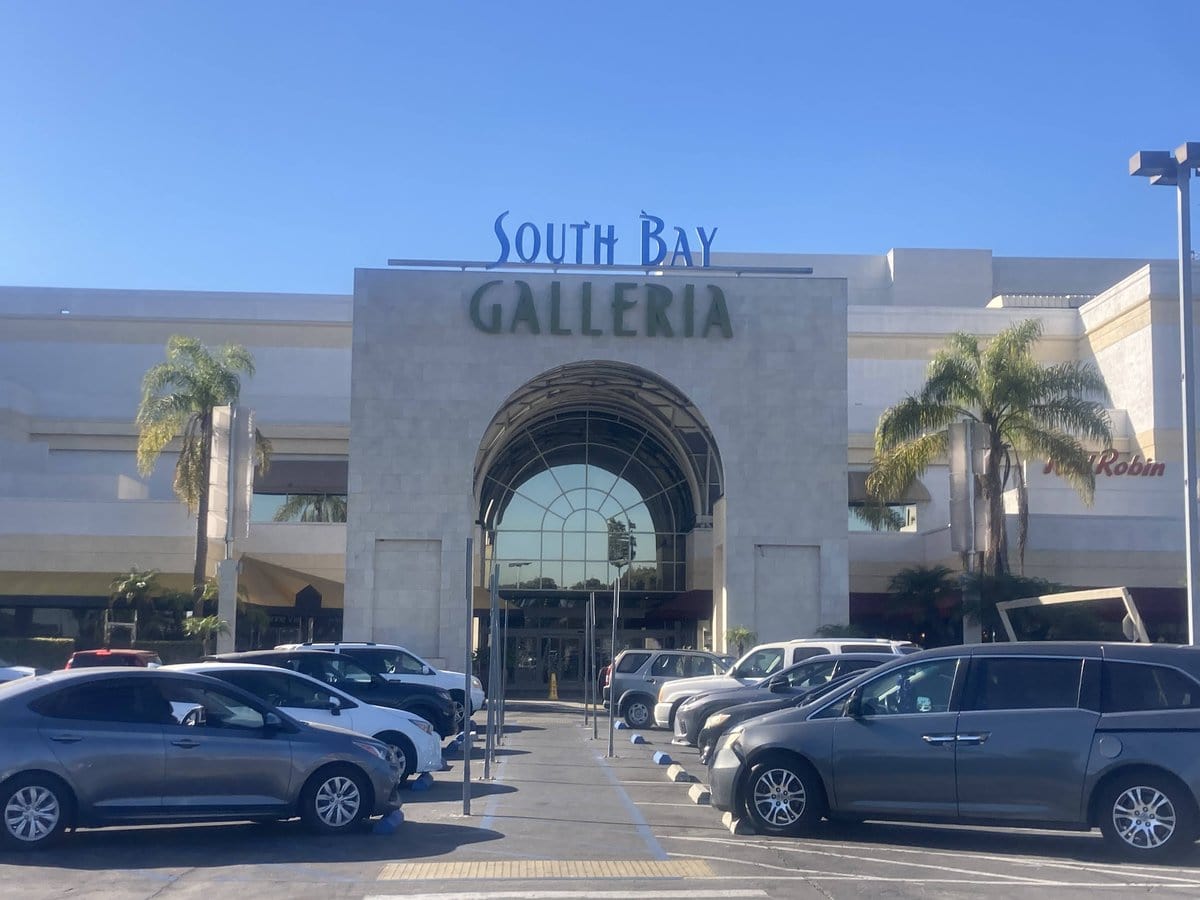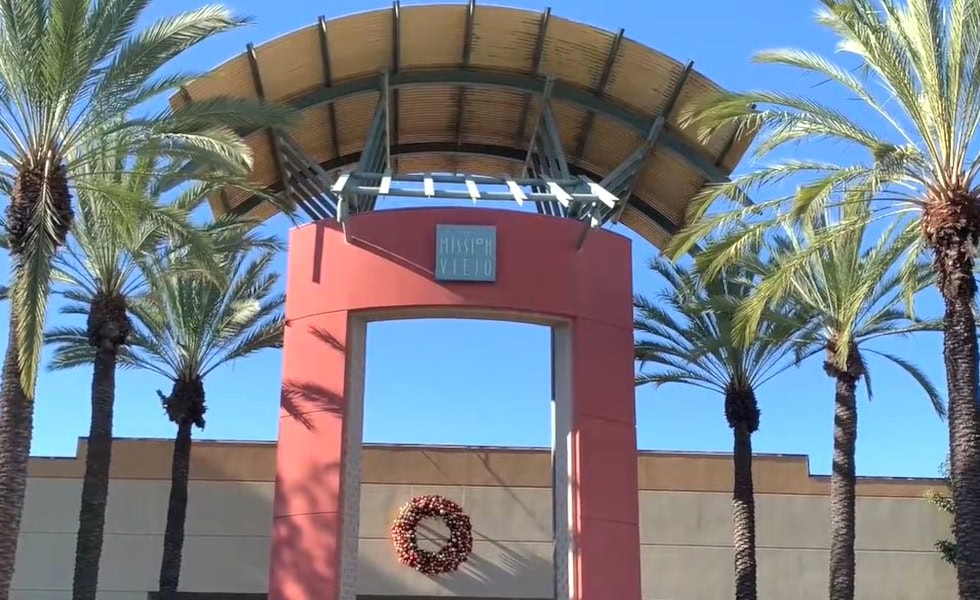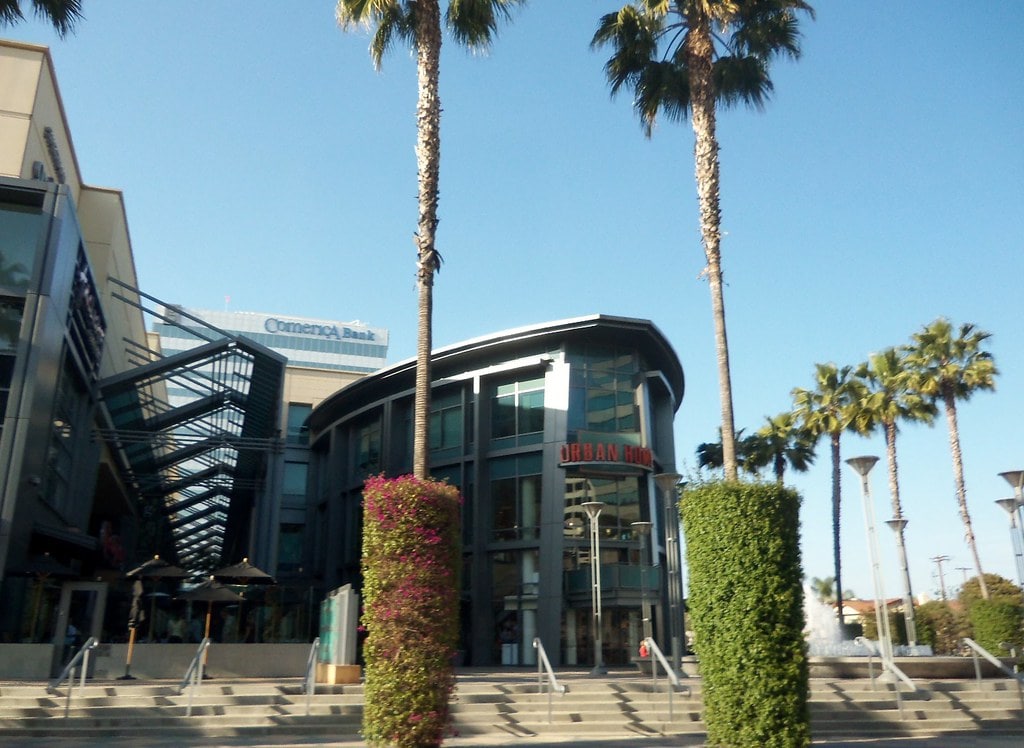A Mall That Has Been Everything
If you walked through Century City in the 1970s or 1980s, you probably passed the sun-bleached concrete of Century Square, sat near the old Bullock's entrance, or maybe caught a matinee at the AMC before dinner at The Marketplace.
You were standing in the early chapters of what would later become Westfield Century City, one of the most transformed retail centers in Los Angeles. At 1.3 million square feet today, it moves differently now, with flagship brands, luxury anchors, glass, and terrazzo, but the bones are old, and the shifts haven't always come quietly.
What looks polished from the outside often carries stories of lawsuits, zoning changes, stalled blueprints, and whole buildings erased.
To track it from its 1964 debut to the billion-dollar expansions is to watch L.A. change, floor by floor.
For those looking for things to do in Los Angeles, this spot remains on the list, though it rarely resembles the version from ten years earlier.
Origin Retail - Century Square Breaks Ground
Century Square Shopping Center opened in 1964 with a direct focus on retail density. The Broadway served as the original anchor tenant, planted firmly in what was then an undeveloped tract in Century City.
The decision to site a mall there tied into broader redevelopment plans around the former 20th Century Fox backlot, aiming to bring in high-rise offices, residential towers, and structured commercial space.
By 1976, the layout shifted again. Developers repurposed the original open-air parking area to add a Bullock's department store and extend the retail footprint.
That move foreshadowed the vertical expansions that would follow decades later, though at the time, it simply meant stacking more retail options into an increasingly trafficked corridor.
The 1987 upgrade delivered two elements that stuck in public memory: an AMC cinema and The Marketplace food court.
These additions weren't flashy in today's terms, but they added hangout value. Teenagers met there. Shoppers lingered. Moviegoers arrived early and stayed late.
And while none of it survives today, the floor and flow patterns shaped how later renovations played out.
The Century Square label stayed in place until the early 2000s. But even in its early decades, the mall reflected the shifting identity of Century City, filling in the grid with commerce, one leased unit at a time.
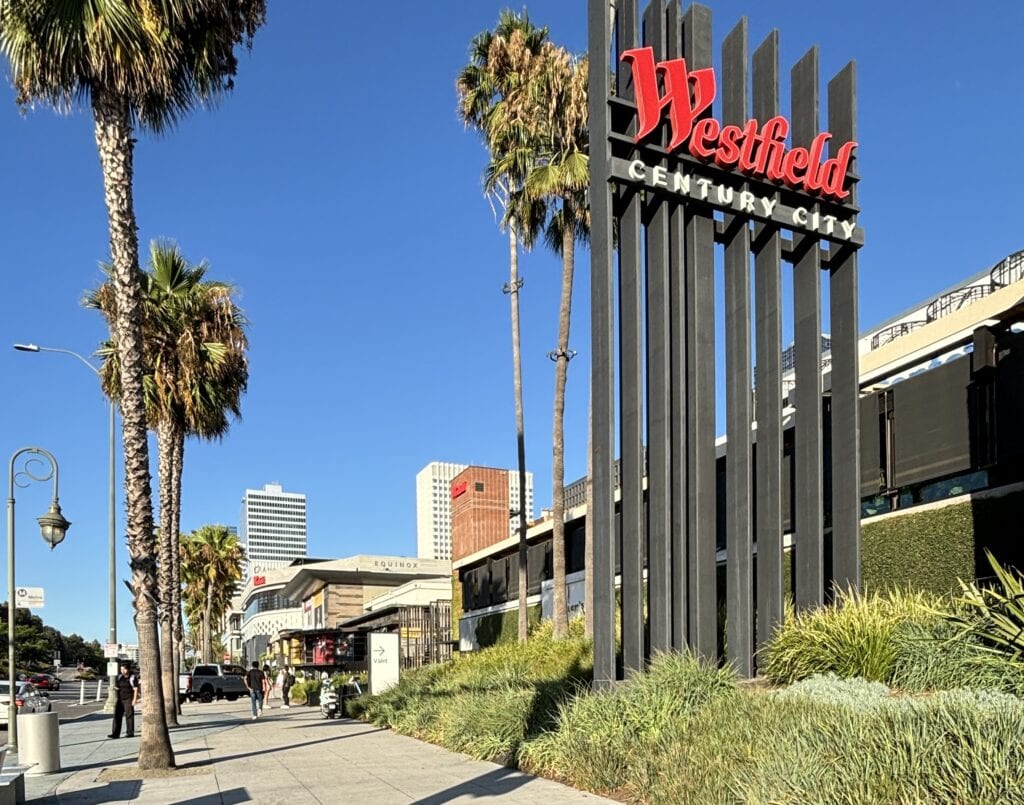
Retail Shifts and Anchor Conversions (1996-2005)
The late 1990s tore through retail in Los Angeles with a different kind of urgency. In 1996, The Broadway shut its doors for good.
Its parent company, Carter Hawley Hale, had been sold off to Federated Department Stores, which then made a fast decision: rebrand The Broadway as Bloomingdale's and convert the nearby Bullock's into a Macy's.
The change happened quickly, but the stores themselves were holdovers from an earlier commercial template, built for another generation's shopping habits.
By 2002, Westfield had stepped in. The Australian-based developer acquired a 50% stake and renamed the center Westfield Shoppingtown Century City.
The "Shoppingtown" tag didn't last long. By 2005, Westfield dropped it entirely, choosing instead to streamline the name to Westfield Century City across all U.S. properties.
At that point, the mall still carried relics of its previous life, but Westfield was already drawing up plans.
A $160 million renovation was announced in 2004. The idea wasn't to expand floor space dramatically but to reshape how the mall functioned.
The AMC theater and the outdated food court were torn out. In their place came a 15-screen flagship AMC and a new Dining Terrace with open-air seating.
New tenants like Borders and The Container Store took the upper levels of a two-tiered building added during the project.
Incremental Upgrades and Tenant Turnover (2005-2013)
After the early 2000s refresh, changes came in steady waves. Westfield added a row of restaurants along the Santa Monica Boulevard edge, designed to pick up more dinner traffic and linger time beyond retail hours.
Some of the more dated finishes from earlier phases were peeled back or replaced altogether. It wasn't a complete rebuild, but it was clear that management was trying to phase out anything that looked like it was leftover from the 1980s.
The bookstore anchor, Borders, lasted until 2011. When the company went bankrupt and shut down its remaining U.S. locations, Westfield Century City lost one of its most visible second-level tenants.
The Container Store held on, but that space, too, would be folded into later reconfiguration plans.
There were no headline-grabbing expansions during this window, but the real estate strategy was deliberate.
Westfield used this period to study traffic, leasing patterns, and the limitations of the center's original blueprint. Behind the scenes, discussions had already begun about a larger overhaul.
The first sketches for a high-rise and major retail extension were already circulating internally by 2009, though they would hit resistance fast once plans reached the neighborhood.

Blueprint Battles and Construction Delays (2013-2017)
The 2009 proposal was ambitious on paper: a 49-story tower, a new Bloomingdale's at the base, over 350,000 square feet of additional retail, and 1,000 parking spaces.
But from the start, local pushback made that version a nonstarter. Residents raised objections. Lawsuits followed. City officials pressured Westfield to scale it back.
By the time a revised plan was presented in 2013, the tower had been trimmed by ten stories and then removed entirely by the time construction began in 2015.
The real work took shape over the next two years. Crews demolished some of the oldest structures on the site, including the Welton Becket-designed Gateway West Building and the original Macy's.
They were replaced with multi-level retail buildings built to meet modern leasing needs. What started as a mixed-use vision with residential space ended up pivoting fully into retail, pushing the total area past 1.3 million square feet.
The phased rollout was deliberate. The new Macy's anchor opened on April 6, 2017. Five months later, Nordstrom launched its store on October 3, 2017, serving as another major anchor.
Eataly, the Italian food marketplace, opened on November 3, 2017, as the last phase of the $1 billion project.
Westfield wasn't building fast, but it was building big, trading the old layout for one that could land marquee tenants with longer leases and more flexible buildouts.
Ownership Transitions and Exit Strategy (2017-2023)
In 2017, Westfield was acquired by Unibail-Rodamco, a French commercial property group that had been looking for a broader U.S. footprint.
With that, Westfield Century City shifted from a domestic asset to part of a European-led portfolio. The branding stayed in place, but operations, leasing strategy and capital planning moved to a new command structure.
Then came April 2022. Unibail-Rodamco-Westfield issued a blunt announcement: it planned to divest from all 24 of its U.S. malls within two years.
The stated reason was to refocus on core European assets, but the decision sent ripples through Los Angeles real estate.
Westfield Century City, still benefiting from its overhaul, landed on that list.
As of June 2025, there has been no public sale or final transaction for the property. The mall continues to operate, but future ownership remains unresolved.
Despite press speculation and analyst chatter, no buyer has stepped forward with a confirmed deal.

Leasing Shifts and Food Trade-offs (2024-2025)
In early May 2025, a new restaurant joined the Westfield Century City lineup: AC Barbeque.
It had backing from two television personalities and opened with media buzz on May 7, only to be shut down less than a week later by the Los Angeles County Department of Public Health.
The reason? Permit issues. By May 16, it reopened after clearing the compliance backlog.
Another two upscale dining spots are set to open at Westfield Century City during the summer of 2025. Casa Dani, a Spanish fine dining restaurant, would take over 17,000 square feet inside the property.
That space, paired with a Katsuya-operated Japanese lounge, raised the total number of high-end food tenants and added capacity for over 400 seated guests.
The timing aligned with broader leasing efforts aimed at luxury and lifestyle retail, shifting away from mid-tier options.
The decision to double down on hospitality wasn't new, but the pacing in 2025 showed that Westfield Century City was still booking names and securing openings despite the unresolved ownership question.
These moves came without headline renovations but weren't minor in scale or footprint.

Auto Tech Displays and Transit Pipeline
In February 2025, Sony Honda Mobility opened its first AFEELA Studio inside the mall, turning a slice of retail real estate into a six-month display center for the AFEELA 1 electric vehicle.
The studio sits near the Atrium level and is scheduled to operate through August. It isn't a dealership and doesn't sell directly, but it gives potential customers a physical walk-through of the design, interface, and in-car software.
That display marked one of the few mall-based tech activations backed by an automaker in 2025.
Directly beneath the property, another transformation has been years in the making. The Los Angeles Metro continues building out its Purple Line extension.
Century City's future station sits just beneath the mall site, with construction visible at street level and behind temporary fencing.
While the service hasn't launched yet, planners have kept to their projected schedule for a 2026 opening.
Just outside the property line, the Century City Center office tower rises slowly. Located at 1950 Avenue of the Stars, the 37-story project adds commercial square footage in a zone already packed with law firms, media offices, and retail.
With the mall in flux, surrounding real estate continues to rise vertically.
🍀

